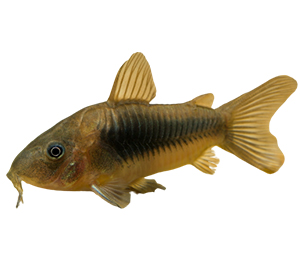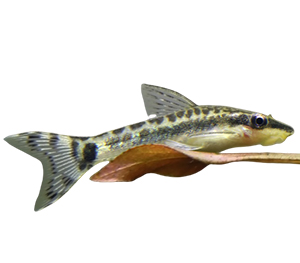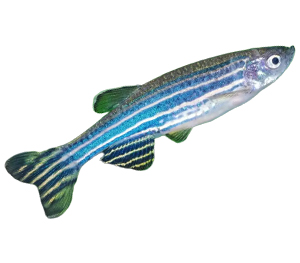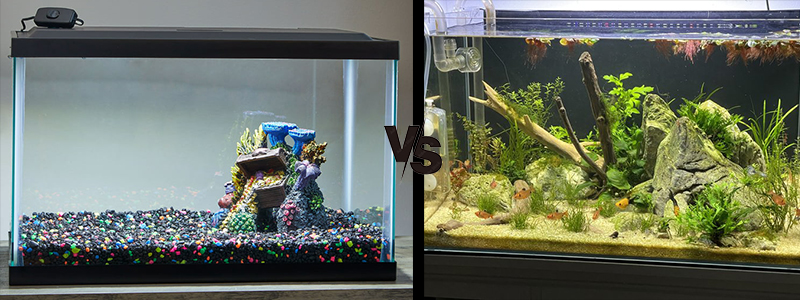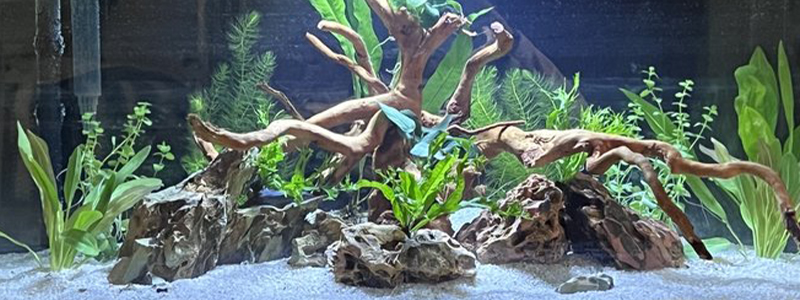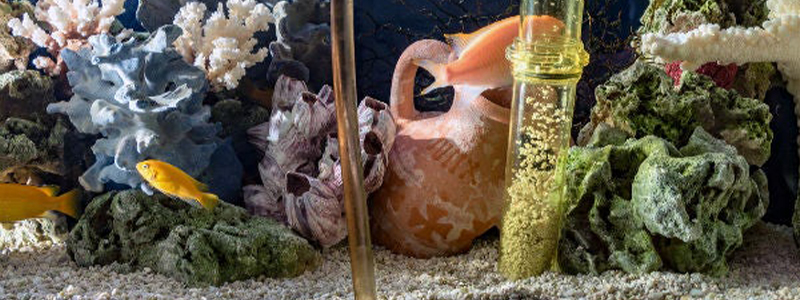One of the cool things about having various types of schooling fish as your aquatic friends is that it’s like watching a beautifully choreographed dance.
However, you may have heard people discuss “schooling” and “shoaling” fish. To give you the lowdown, schooling fish are those that swim as a team, typically of the same kind, whereas shoaling is more like a relaxed gathering of fish in loose groups.
Thus, in this article, we will provide you with the 11 best types of schooling fish including their major requirements so you may have a better understanding of them.
Let’s get started!
Schooling Fish vs Shoaling Fish: What’s the Difference?
In aquariums, there is often confusion between the terms “schooling” and “shoaling.” Let’s simplify it:
- Schooling Fish – These fish function as a closely united team. They swim close to each other with coordinated precision. Utilizing their remarkable lateral line system, they can sense each other’s movements and maintain synchronization.
- Shoaling Fish – Shoaling fish are similar to a group of friends gathering together. They stay nearby due to their social nature, but they do not swim in a strict formation. It’s like friends meeting at a coffee shop, chatting and enjoying themselves without the need for synchronized movement.
So why does this matter for your aquarium? Well, it has an impact on the aesthetics of your aquarium. Small schooling fish for aquarium create an impressive show with swimming patterns, while shoaling fish bring about a more relaxed atmosphere.
Disclosure: This article contains affiliate links. When you follow a link to purchase the products, I sometime earn a commission, at no additional cost to you. Read my full disclosure here.
Understanding the Behavior of Schooling Fish
Schooling fish, those elegant aquatic performers, possess a valid motive behind their synchronized movements. It goes beyond aesthetics and serves the purpose of survival.
Collective Safety: In their natural habitat, smaller fish are vulnerable targets for ravenous predators.
However, by swimming close as a unit, these fish create confusion among their predators.
Food Search: Schooling behavior not only facilitates the food search but also enhances its chances of being found.
With multiple individuals actively searching, the likelihood of stumbling upon a meal significantly improves.
Finding Mate: Swimming in a school increases the probability of encountering a suitable mate! In larger groups, the odds are higher to meet and connect with an ideal partner.
Hence, these coordinated swimmers do more than just put on impressive displays; they survive and find their ideal mates through schooling.
The Best Schooling Fish For Freshwater Aquariums
Now, that you are fully aware of the difference between schooling and shoaling fish, here we are going to present the best schooling fish.
Have a look at these colorful freshwater schooling fish!
1. Harlequin Rasboras
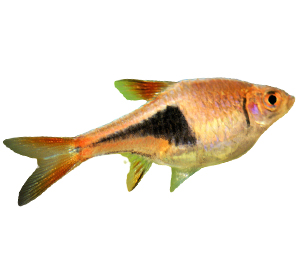
It is advisable to house them in groups of 6-8 individuals, as their silver bodies adorned with pinkish-red hues and distinctive blue-black patches create an aesthetically pleasing display.
These captivating small schooling fish for aquarium prefer swimming in the upper levels of the tank. Their adaptable nature enables them to tolerate varying water conditions, making them particularly suitable for novice fish keepers.
| Conditions | Requirement |
| Difficulty of care | Easy (Beginner to Intermediate) |
| Temperament | Peaceful |
| Water requirements | 70-80 F, 5-7.5pH |
| Tank requirements | 15 gallons |
| Tank level: | Top and mid-dweller |
2. Corydoras Catfish
Multiple species of the freshwater schooling fish Corydoras catfish gracefully comb the substrate of the tank in search of food. When navigating the aquarium, these large schooling fish occasionally form schools but generally stay in shoals. They might even wink at you or come to the surface for a breath of air.
| Conditions | Requirement |
| Difficulty of care | Beginner |
| Temperament | Peaceful |
| Water requirements | 74-80°F,pH 5.5-8 |
| Tank requirements | 15-30 gallons |
| Tank level: | Top to Mid-dwellers |
3. White Cloud Mountain Minnows
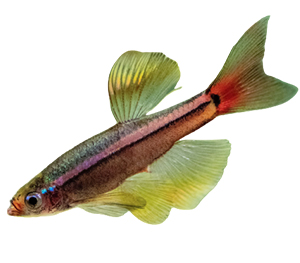
Despite their small size, White Cloud Mountain minnows have fascinating schooling behaviors that beautifully match their attractive colors. These small schooling fish are ideal for beginner aquarists!
| Conditions | Requirement |
| Difficulty of care | Beginner |
| Temperament | Peaceful |
| Water requirements | 60-72° F, 6.0-7.0 pH |
| Tank requirements | 10 gallons |
| Tank level: | Top to Mid-dwellers |
4. Neon Tetras
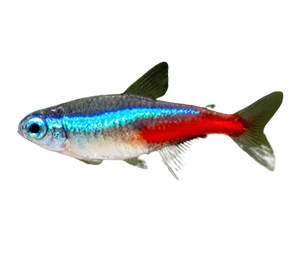
Neon tetras, a small schooling fish are a top option due to their beautiful appearance, calm temperament, and simplicity of care. In your tank, a school of 20 or more neon tetras puts on a spell-bounding show.
| Conditions | Requirement |
| Difficulty of care | Beginner |
| Temperament | Peaceful |
| Water requirements | 70-77°F, pH 4-7.5 |
| Tank requirements | 15 gallons or more |
| Tank level: | Top to Mid-dwellers |
5. Cherry Barbs
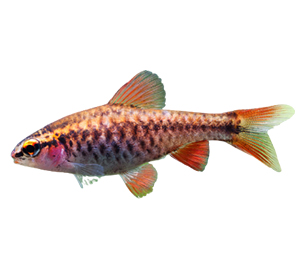
Cherry barbs small schooling fish for aquarium are relatively low-maintenance and make an ideal choice for those new to fishkeeping.
To avoid aggression or shyness, it is advisable to maintain a proper male-to-female ratio of one male per every two females.
| Conditions | Requirement |
| Difficulty of care | Beginner |
| Temperament | Peaceful and Shy |
| Water requirements | 73-81° F, 6.0-8.0 pH 20-30 gallons |
| Tank level: | Mid and bottom-dwellers |
6. Otocinclus Catfish
Otocinclus catfish are skilled at forming schools and thrive in planted tanks. Despite their more subdued coloration compared to other species, these peaceful freshwater schooling fish excel as algae eaters, ensuring a clean and well-maintained aquarium.
Otocinclus small schooling fish for aquarium graze on surfaces such as driftwood, plants, and glass, consuming algae when it is available in sufficient quantities for sustenance.
| Conditions | Requirement |
| Difficulty of care | Beginner |
| Temperament | Peaceful |
| Water requirements | 74-79°F, pH 6-7.5 |
| Tank requirements | 10 gallons |
| Tank level: | Mid-level |
7. Cardinal Tetras
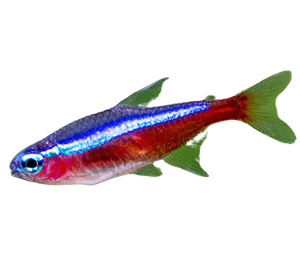
These colorful freshwater schooling fish are calm and social fish that get along well with other tetras, danios, and rasboras in groups of at least six.
Cardinal tetras have particular water needs and prefer water that is soft, acidic, and low in minerals, which makes them better suited for established aquariums.
| Conditions | Requirement |
| Difficulty of care | Beginner-Intermediate |
| Temperament | Peaceful |
| Water requirements | 76-81° F, pH less than 6.0 |
| Tank requirements | 20 gallon |
| Tank level: | Top to mid-dweller |
8. Rummy Nose Tetras
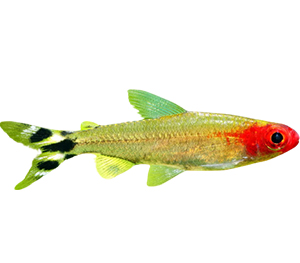
They tend to swim together in the upper and middle parts of the tank. To fully enjoy the beauty of this freshwater schooling fish, it is important to provide them with enough space to swim freely and keep a school of at least 10 individuals
| Conditions | Requirement |
| Difficulty of care | Beginner |
| Temperament | Peaceful, active schoolers |
| Water requirements | 72-77° F, 6.0-7.0 pH. |
| Tank requirements | 25+ gallons |
| Tank level: | Mid dweller |
9. Zebra Danios
Zebra Danios brings a unique element to the aquarium with their vibrant horizontal stripes that stand out among other types of schooling fish such as tetras or barbs. Their ability to thrive in various conditions and reproduce quickly makes them a durable option for your tank.
Notably, these colorful freshwater schooling fish, exhibit lifelong partnerships when it comes to mating.
| Conditions | Requirement |
| Difficulty of care | Beginner-Intermediate |
| Temperament | Usually peaceful but may nip at other fish sometimes |
| Water requirements | 65-77° F, 6.5-7.2 pH |
| Tank requirements | 25+ gallons |
| Tank level: | Any level |
10. Platy Fish
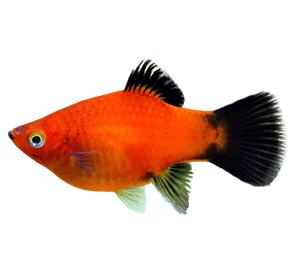
| Conditions | Requirement |
| Difficulty of care | Beginner |
| Temperament | Peaceful |
| Water requirements | 72-78° F, 7.0-8.5 pH |
| Tank requirements | 10+ gallons (for platies only and 25+ with other fish) |
| Tank level: | Mid-level dweller |
11. Red Rainbowfish
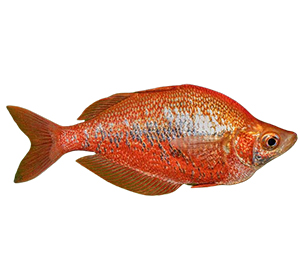
| Temperament | Peaceful and Shy |
| Water requirements | 75-82° F, 7.0-8.0 pH |
| Tank requirements | 75+ gallons |
| Tank level: | Mid-level |
How to Choose Suitable Types of Schooling Fish?
Selecting the ideal types of schooling fish for your aquarium is a little bit hard task!
Several factors must be taken into account to ensure harmonious swimming among the fish.
Here are some key considerations;
Tank Size: Certain types of schooling fish, such as Zebra Danios, are like marathon runners in the aquatic realm; they require ample space to stretch their fins comfortably.
On the other hand, others like Neon Tetras prefer more intimate living arrangements similar to cozy spaces.
Before making a decision, you must know how much room each fish requires to thrive optimally.
Water: Some favor warmer temperatures, while others prefer cooler waters. Additionally, factors such as pH levels and water hardness play a significant role in creating their ideal aquatic environment for small and large schooling fish.
For example, Cardinal Tetras thrive in soft, slightly acidic water conditions, whereas Harlequin Rasboras are more adaptable to varying water preferences.
Food: Understanding the dietary preferences of your fish is crucial. Some fish have a versatile palate and consume both plant matter and small organisms, while others prefer a more carnivorous diet.
Activity Level: Consider the activity levels of different fish species. Some are highly active, constantly swimming and bringing liveliness to the tank.
On the flip side, some large schooling fish prefer a more relaxed lifestyle, preferring to stay in one spot. Your decision will impact the overall atmosphere of your aquarium.
Why does Schooling Size Matter?
When dealing with types of schooling fish, the number of companions they swim alongside significantly impacts their behavior and well-being.
Most of these fish prefer to be in a group of at least six friends, but having an even larger group allows them to engage in their natural behaviors.
However, it is important not to overcrowd your fish tank as having too many large schooling fish can lead to aggression and illnesses.
Therefore, learn about types of schooling fish preferences’ regarding group size so that everyone is comfortable at the party!
Conclusion
When you’re setting up your new fish tank, you want to make it lively and colorful, right?
Well, that’s where the types of schooling fish come in!
They’re these tiny, bright fish that can be a bit shy when alone, but they really come alive when they’re with their fishy friends.
But wait, there’s a catch – not all of them get along, so you need to think about things like water, tank, and temperament before you mix them up in your aquarium.

